 THE NEW ARGENTINA THE NEW ARGENTINA |
Although best known around the world for its commodities and still mired in a recession, Argentina is nonetheless relentlessly trudging forward on its way to building a new, highly sophisticated economy.
The new Argentina that is silently taking over includes telecommunications and Information Technology (IT), tourism and hotels, biotechnology, organic food production, new major infrastructure developments, modern airports, toll highways and shopping malls, to name but just a few of the most dynamic sectors.
 Telcos get massive investment Telcos get massive investment |
One of the best examples of the deep changes taking place is its $11 billion telecommunications and IT industry - more than 10 years after the sector was first privatized and later deregulated, dozens of major international players are providing state-of-the-art communications throughout the country.
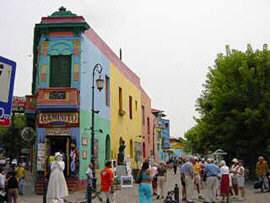
That, according to Communications secretary Henoch Aguiar, is mostly due to Argentina’s impressive academic record.
There is something special happening with the Internet in Argentina and that's why plenty of companies are coming and looking for people to create Web sites. We have a large number of university degree holders and a very significant academic tradition. We must underline that our best capital is our people, he says.
Spain’s Telefonica, Telecom (a 50-50 joint venture by France Telecom and Telecom Italia), AT&T, Motorola, Comsat, Global Crossing, IMPSAT, Techtel, General Electric, MCI Worldcom, BellSouth Corp, Hughes Electronics, Lucent GTE Corp. and others are expected to shovel up an extra $6 billion into the sector by 2003.
With 2.5 million net surfers, Argentina has ample supply of broadband connections through wireless, cable modem and ADSL (which uses the telephone wiring without interfering with normal phone communications), with rates on a constant decline.
This was made possible thanks to companies such as Global Crossing and Argentina’s Impsat, which have joined forces to wire up not just Argentina but the whole of South America with latest-generation fiber optics.
Global Crossing says its job was made easier by the right official policies. There is a good legal and commercial framework provided by the government to this sector, says the company’s regional Managing Director Luisa Cerar.
IMPSAT, the hi-tech branch of IMPSA, has pumped $1 billion into the industry and keeps adding volume to its operations and expanding business across the region.
When we started with IMPSAT the telecommunications market was pretty virgin in Argentina, recalls IMPSA’s president Enrique Pescarmona. Today, IMPSAT is the only telecommunication company that is placed throughout the Americas.”
Comsat Argentina (a Lockheed Martin company) went from 20 employees and $2 million in sales in 1992 to 225 workers and $44 million in revenues now.
Motorola, the number one cellular phone services provider in Argentina, is setting up a hi-tech software center in Cordoba, 700 km (440 miles) northwest of Buenos Aires. The plant, which will employ 500 software engineers when it goes into full operation in 2005, will develop third-generation wireless kits that will likely make today’s telephones look like stone-age artifacts.
AT&T is investing $500 million to develop fiber optic infrastructures and a wireless telephony platform. Its goal is to expand its corporate services and also making inroads into the residential users market. In the process, it plans to go from its original 19 employees to up to 2,000.
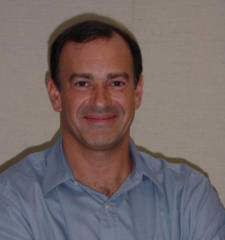
These and other providers act as carriers for Internet Service Providers (ISPs) and provide web hosting, e-mail services, data mining, e-commerce architecture and all the rest of the IT paraphernalia, including streaming media, teleconferencing, Enterprise Resource Planning (ERP), Customer Resource Management (CRM), Supply Chain Management and Application Service Provider (ASP) services.
A recent study by the prestigious Invertir Argentina Foundation showed that one full quarter of all foreign direct investment during the first half of 2000 ($3.2 billion out of a total $12.6 billion) went to the telecommunications industry.
That is why companies like Compaq are so bullish about the future. We grew by 28 percent in the IT market when Argentina was passing through a very bad economic situation. In the near future we will be the leaders of the IT market. In three years from now, we will probably have a revenue of $700 million, says Compaq Argentina General Director Pablo de Lazzari.
Telecom Argentina President Juan Carlos Masjoan recalls that a decade ago only 13 percent of the 3 million existing phone lines were digital. Today 100 percent of the network is digital and the number of telephone lines rose to 9 million, he says.
Argentina, world’s second biotech producer
But that is just part of the picture. Take biotechnology --Argentina is the world’s second producer of transgenic agricultural products, after the United States.
All international major leaguers are present in Argentina, including market leader Monsanto and local Nidera, which in 1996 patented a soybean seed that is resistant to glyphosate, a cost-effective, environment-friendly herbicide.
Although there is growing resistance in Europe to genetically engineered foodstuff, Argentine government officials and producers say those objections have no scientific grounds and are sometimes politically motivated.
There are not scientific conclusions to prove their impact on human health, protests Agriculture Secretary Marcelo Regunaga. And their advantages are enormous, he adds. We will sell more expensive corn with high contents of oil and also many vegetables with higher level of vitamins. Argentina will also produce tobacco with a very low level of nicotine.”
Marcelo Arguelles, President of Bio Sidus Laboratory, says transgenic proteins have long been used around the world in injections applied to human beings without any problems. So it makes no scientific sense to say that transgenic corn or soybean can have any effect. He believes opposition may come from countries that want to gain time to catch up with others that have advanced faster in the industry.
 Organic food output on the rise Organic food output on the rise |
Ironically, Argentina is also the world’s fourth largest producer of organic food - naturally-grown products that are mostly favored by those dead set against genetically-tampered goods.
The country is number two in the world (behind Australia) in terms of land dedicated exclusively to organic food production - a whopping three million certified hectares. It also is the top world seller of organic olive oil, honey, red meats, and a wide assortment of fresh fruits and vegetables.
There is an explosive growth of organic food production in our country, says Laura Tami, President of the Argentine Chamber of Certified Organic Products (CAPOC). The world market is expanding fast.”
The Mad Cow disaster, the recent global burst of Foot and Mouth disease, and growing misgivings in Europe about transgenic grains and vegetables, were behind a 25 percent growth of organic food consumption in industrial nations over the last decade.
To qualify as organic, food must meet strictly supervised international criteria -- no chemical pesticides or fertilizers, no genetic tampering, and no medication, hormones or modified fodder for animals. Cages, roofed environments and artificial illumination for poultry and livestock are banned.
Argentina’s organic farmland has jumped from just 5,000 hectares in 1993 to 230,000 in 1997, one million in 1999 and 3 million last December, after large chunks of Patagonia were certified in one single step. Experts say that at this rate of growth, the sector could be exporting several hundred, perhaps billions of dollars worth of products within a few years.
 Tourism & lodging, a $3,5 billion sector Tourism & lodging, a $3,5 billion sector |
Other relatively young industries are lodging and tourism. With four million foreign visitors and 17 million local tourists a year, Argentina’s hotel business is booming, with billions of dollars going into new hotel projects.
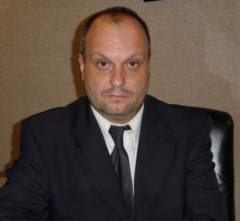
Currently Argentina gets $3.5 billion from tourism a year. We hope to reach $6.5 billion a year, says tourism Secretary Hernan Lombardi. It’s a two-pronged approach - raising the amount of tourists and also their per-capita spending,”
In Buenos Aires alone, the stock of four and five-star hotel rooms rose by one third, or 3,000 rooms, in just two years. That comes on top of projects completed in the last eight years, like the deluxe Hyatt, Hilton Inter-Continental, Marriott and Caesar Park hotels in Buenos Aires and the top-notch Sheraton hotels which have been added in the cities of Cordoba and Mar del Plata.
The Hilton, in the posh Buenos Aires area of Puerto Madero, caters to the IT community. Our guest list today is 60 percent related to Internet, communications and data, says Hilton’s General Manager Tom Potter.
In addition, legendary French architect and hotelier Philippe Starck is building a $50 million, top-of-the-line boutique hotel in Buenos Aires, the first of its kind in Latin America, expected to open to the public next year.

All the new competition does not make officials at the Alvear Palace --a luxurious family-owned hotel built in 1932 which joined the ranks of the Leading Hotels of the World in 1994—at all nervous. | At this moment our hotel charges the highest rate on the market and has the highest occupancy as well. We compare rate- average- occupancy daily with these four or five hotels that we consider are in our market niche and there is no doubt we excel in average rate and in occupancy, says Alvear’s General Manager Olga Petroni.
The industry is also getting a shot in the arm by the government, which recently launched the National Plan for Tourism Development, aimed at attracting an extra $1.6 billion in hotel infrastructure development through 2003.
Meanwhile, the leading French hotel chain Accor has decided to tap the middle-income traveler segment, and came up with a plan to invest a total $230 million to build 50 three- and four-star hotels in Argentina, of which two are already in operations.
Many of Argentina’s top resorts, including the Iguazu falls on the Brazilian border, several ski resorts at the Andes foothills, the noted Perito Moreno glacier, the Patagonian lakes and the whale and penguin watching areas also in Patagonia have an under par hotel infrastructure.
Internet travel agencies such as Viajo.com say they can help reduce tourism costs, adding more stamina to an already dynamic sector. The future looks bright for everyone, celebrates Viajo.com Executive Vice President Marcelo Young.
Argentina is also getting a growing number of visitors who take cruises to Antarctica. The number of passenger ships arriving in Argentina is growing all the time, says Victor Hugo Bonnet, Vice President of London Supply, an Argentine company that is in the airports and ports business.
Ski resorts are also attracting massive funding, with $70 million pledged by private investors to upgrade and develop facilities in southern and western Argentina over the next five years. The sport attracts 120,000 people a year and brings in a total $200 million in revenues.
 Shopping malls popping up all over the place Shopping malls popping up all over the place |
All those developments require better infrastructure and transportation facilities. And sure enough, Argentina’s airports, roads, shopping centers and infrastructure in general have been receiving massive investment over the last few years.
Shopping malls have been popping up like mushrooms after the rain -- the Tren de la Costa complex, Unicenter, Costa Salguero, Alto Palermo, Abasto are but a few of those that were built in the last few years. In 2000 shopping centers posted $1.7 billion in combined sales.
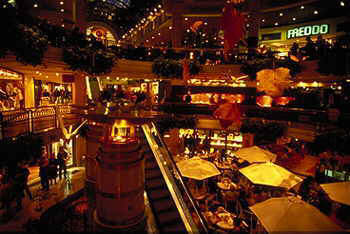
Supermarkets (Wal-Mart, Carrefour, Jumbo, Disco, Unimarc, Auchan, Norte, Makro-Kargo), and homecenters (Easy and The Home Depot) are also on a fast track of growth.
Argentina’s leading developer of shopping centers is Alto Palermo, part of the investment group IRSA. Established in 1989, it has 760 employees and total annual sales of $120 million. Its Chairman of the Board is Eduardo Elsztain, who also chairs the boards of IRSA and of Cresud SACIF, one of Argentina’s largest agricultural companies.
Alto Palermo’s latest addition was the construction of a 190-store, state-of-the-art shopping mall and three adjacent apartment buildings with a total 545 residential units. The firm invested $144 million to turn the old, decaying Abasto fruit and vegetable marketplace into a modern commercial, cultural and entertainment center complete with restaurants, movie theaters, museums and exhibition and convention centers.
Alto Palermo owes, either directly or through majority stakes in other societies, seven shopping malls in Argentina, including five in Buenos Aires: Paseo Alcorta, Alto Palermo, Buenos Aires Design Center, Patio Bullrich and Abasto.
 The building empires The building empires |
The largest construction and engineering companies include Grupo Roggio, Sideco Americana (part of the Macri Group), Techint, DYCASA (a unit of Spain’s Grupo Dragados) and Sade, part of the Swedish group Skanska AB.
Roggio was founded in 1945 by Italian immigrant Benito Roggio as a small construction company and is currently chaired by his grandson, Aldo. In the meantime, the firm has become a $600 million building empire.
It went from building houses to constructing schools and service stations. After that came roads, bridges, oil and gas ducts, dams, industrial plants, hotels, office buildings and underground railways. The company is also involved in real estate, garbage collection and environmental engineering.
In the early 90’s it took up the concession of the Buenos Aires Metro system, Metrovias, which went from carrying 300,000 passengers to one million in heavy days now.
DYCASA commenced operations in 1968 and its business really picked up steam in the 1990’s, when as part of Argentina’s sweeping privatization most highways, airports, public transportation companies and utilities were either sold or handed down to the private sector in concessions.
It has since built hundreds of highways, aqueducts, railway and underground systems, natural gas ducts, apartment and office buildings, ports, thermoelectric plants, irrigation systems, schools, service stations, hospitals, prisons, stadiums, water treatment plants, nuclear plants, bridges and airports. It also participates in toll highways management, garbage collection and sewage and drinking water concessions throughout the country.
In 1994 DYCASA partnered with Italy’s Impregilo-IGLYS and Argentina’s Sideco Americana and won the concession to run Autopistas Del Sol --the country’s most highly trafficked and profitable toll road, linking the capital with its affluent northern suburbs-- through December 2020. The three companies have a 33.3 percent stake each in the undertaking and have invested a total $800 million.
We have high standards of customer’s satisfaction, says Autopistas del Sol Vice President Luis Freixas. They recognize our efforts and our investments.”
DYCASA, which in 1999 posted $133 million in revenues, is now building a new underground railway line in Buenos Aires. It also was adjudicated construction of a 1,500-inmate prison in the Buenos Aires province.
 Buenos Aires airport gets facelift Buenos Aires airport gets facelift |
Aeropuertos Argentina, the company running Ezeiza, the international airport in the outskirts of Buenos Aires, is investing $570 million to refurbish and modernize the air terminal, doubling its passenger capacity and turning it into Latin America’s most up-to-date airport.
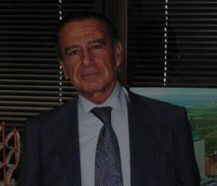
After completion of the work by 2002, Ezeiza will be able to handle 12 million passengers a year - 9 million international and 3 million domestic.
The new glass-and-steel structure will have 120,000 sq. meters and will be able to handle 45 airplanes at a time, with improved safety features. New, underground-parking facilities will accommodate 4,500 vehicles, 10 times as many as in the present.

Meanwhile, Argentina’s domestic airline Southern Winds (SW) has started flying to Uruguay, Peru and Brazil and plans to add Chile and Miami in the coming months as part of an ambitious expansion plan that also includes destinations in Europe.
Other local airlines are also vying to cover those routes, but SW President Juan Maggio trusts his company will easily win the right to provide the service. We really believe we are the only ones who have the vocation to get the necessary equipment in order to have a huge international network, he says.
The state-run Lineas Aereas del Estado (LADE) ensures all corners of the country are reached by plane. The reason for LADE’s existence is that not all places are profitable for private airlines, the company’s director Alberto Borsato says.
All that construction takes a lot of Portland. Cement production has gone from 3.6 million tons in 1990 to 6.6 million in 2000.

The main producer and distributor of cement in Argentina is Loma Negra. It has nearly $400 million in annual sales and more than a 50 percent market share. Business is doing excellent and the company is now building a new cement plant that demanded $450 million in investment.
In the last three years we’ve seen an amount of dynamism that we hadn’t seen in previous years, says Loma Negra President Amalia Lacroze de Fortabat.
Other major cement firms include Juan Minetti --which has merged with Corcemar ($258 million sales in 1999), partially acquired by Holderbank from Switzerland--, and Cementos Avellaneda ($113 million), acquired by Spain’s Molins and Uniland.
We’ve invested more than $200 million in Argentina, says Cementos Avellaneda Vice President Jorge Heller Goiburu. We’ve gone through hard times, such as the 80’s, which was a tough time for construction, but we always managed to post profits.”
And the crisis is generating new business opportunities in the building sector, says real estate agent Norma Callegari. Argentina is a wonderful place to invest right now because the price of the sq. meter has hit a low. Reactivation will come up any minute now. We are right now in talks with very important companies that are coming to set up shop here, she says. |

